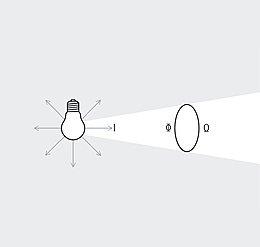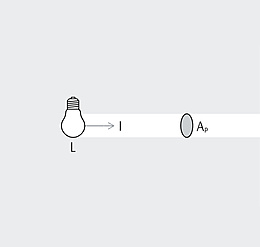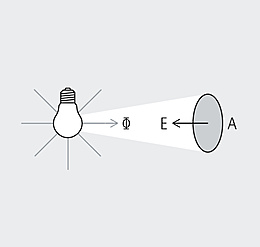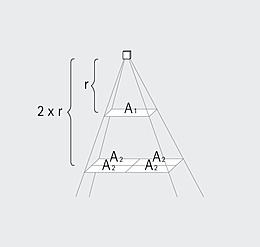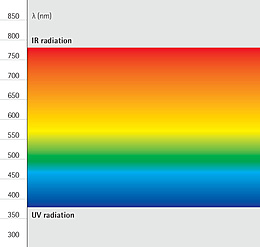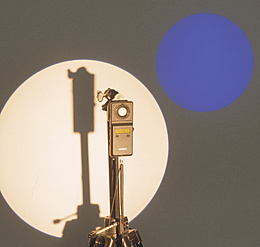
Luminous flux is a measure of the light output of a light source
Luminous flux (Φ), measured in lumens (lm), describes the total light output emitted by a light source in all directions. The luminous flux is measured with special measuring instruments or by calculation. This total light output is calculated from the radiant flux by evaluation with the spectral luminous efficiency of the human eye.

